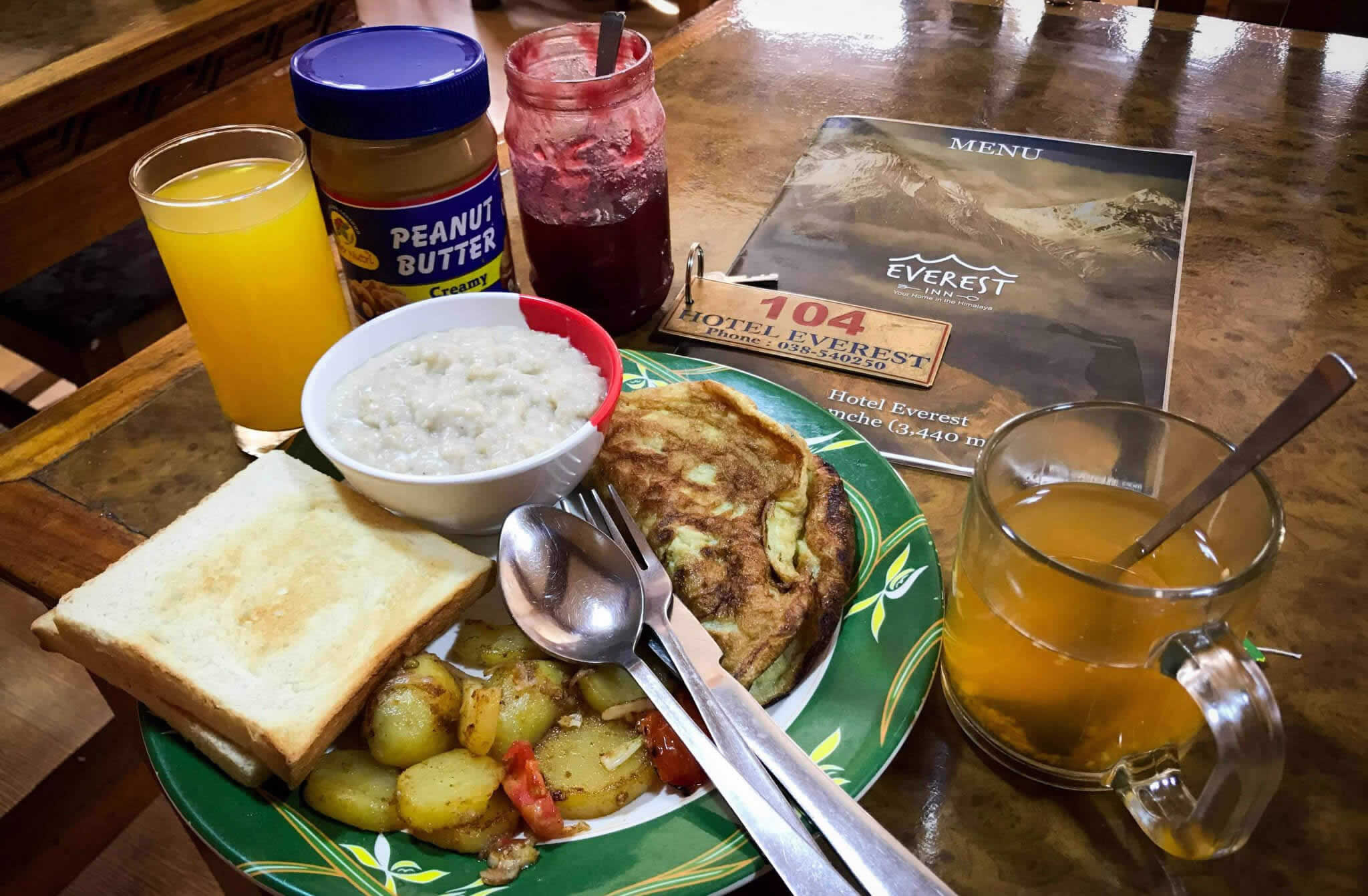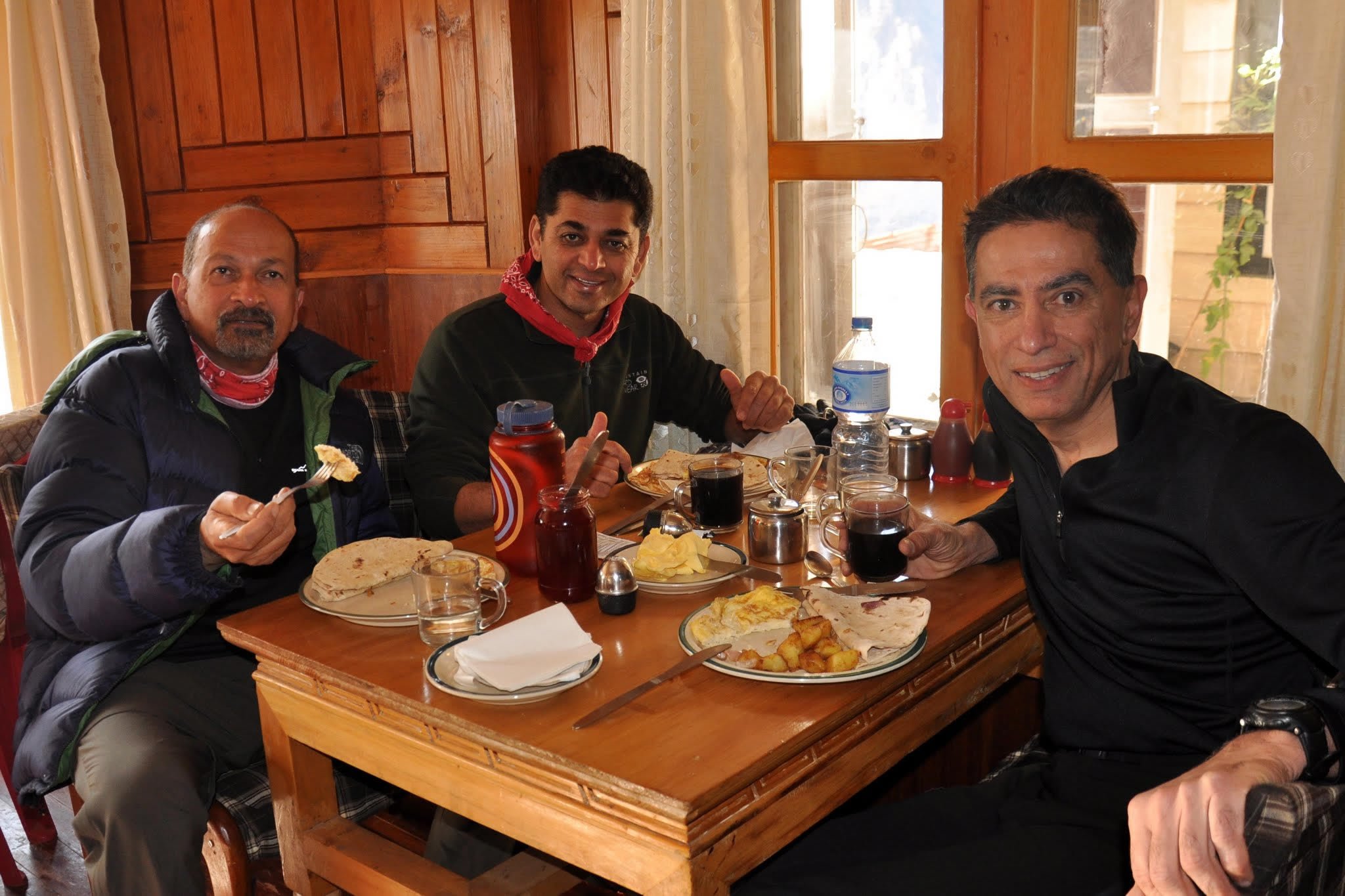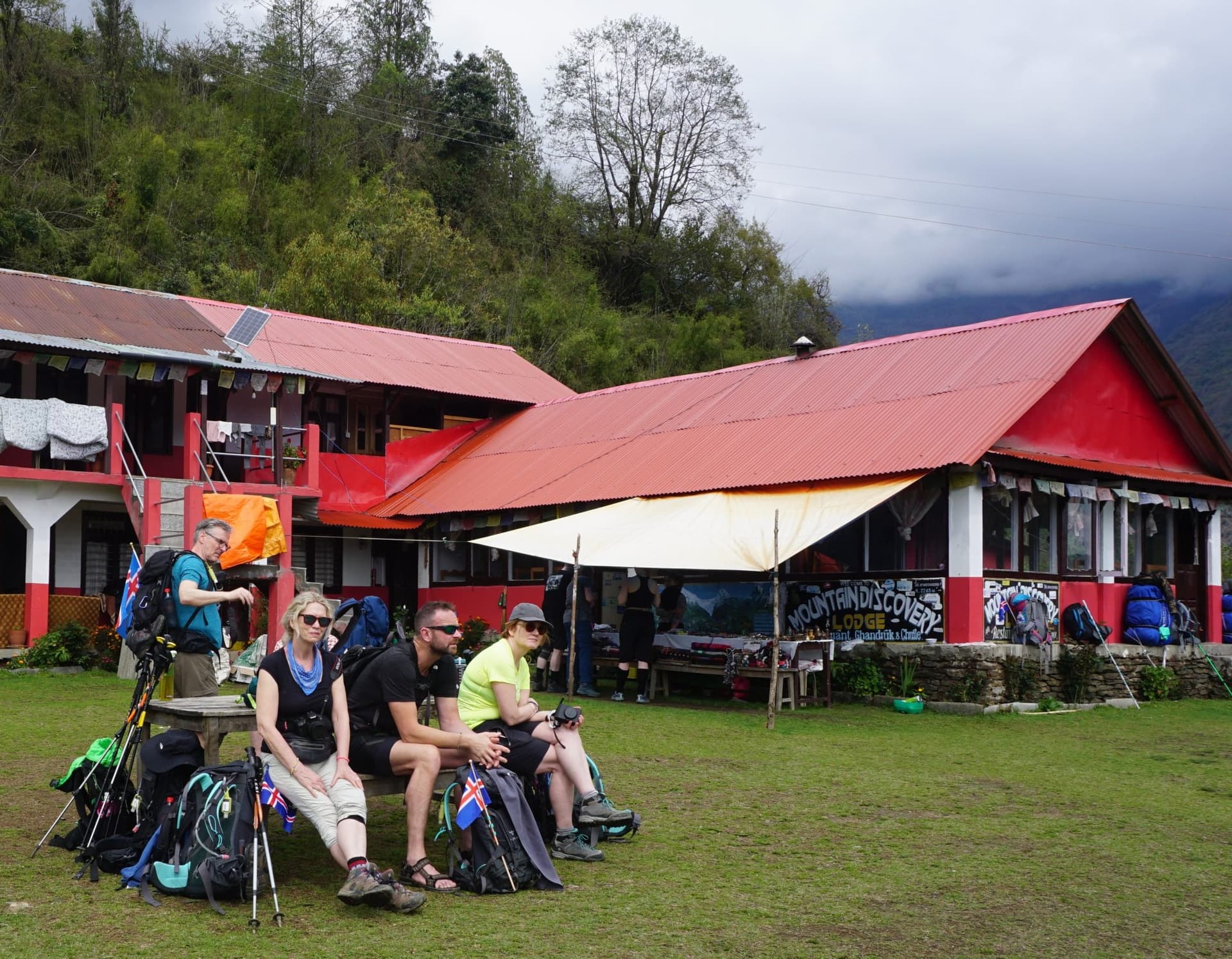Famous all over the world as one of the most amazing and adventurous trekking journeys on the planet- the Everest Base Camp Trek presents challenges pertaining to both the physical and mental aspect. The trekking journey is the one where trekkers have to adjust to high altitude conditions, adjust themselves at the accommodations in the mountains, and of course trek for prolonged hours during the day hiking from one destination to the next. The Everest Base Camp Trek, while being one of the most beautiful trekking journeys out there, still presents certain challenges that take people out of their comfort zone. Here, we will be discussing about the food during the Everest Base Camp Trek-
Regular meals and food during the Everest Base Camp Trek are available at the lodges and the guesthouses where trekkers stay during the journey. It is important to know how to eat meals in accordance with your body’s needs in the mountains. The Everest Base Camp Trek is a relatively moderate trekking journey and enjoying a regular meal at the tea-houses or the trekking lodges would certainly suffice. In addition, taking easy-to-use nutritional supplements, vitamins and minerals along the trek also greatly helps. The meals and food during the Everest Base Camp Trek are prepared hygienically and make for good sources of energy.
Generally, it is important to about certain aspects of culture of the people living in the mountains. The Sherpa people, who are the prominent people residing in the mountain villages, follow their tradition and custom of not slaughtering animals. The Buddhist religion does not condone killing animals, and thus the entire acreage under the Sagarmatha National Park does not allow any animals to be harmed. As such, meat and eggs for the Everest Base Camp Trek are generally supplied from Kathmandu. Because many villages along the trekking route to the Base Camp are located far away from any roads, getting the food supplies to the locations are done by planes. After that, the food is carried higher up in the mountains by porters, yaks and other domesticated animals of the mountains. This leads to higher prices of the food in the Himals. Basically, at remote locations during the trek, the food is brought with great strain by the porters from their aviation arrival points. During the Everest Base Camp Trek, the foods to the lodges arrive from Kathmandu to Lukla and are then carried further on by the porters and the animals.
For these reasons, the aspect of meals and food during the Everest Base Camp Trek isn’t extremely wide. Flour and cereal food products and meals are the ones that are readily available at the tea-houses and the lodges. It is also advised to stick to vegetarian meals rather than non-vegetarian meals because not all trekkers have the stomach for it at high altitude locations. One can certainly order meat dishes, but because of the transportation of the food in the mountain as mentioned before, the meat products do not tend to be the most fresh. Meat dishes can be ordered at trekking lodges that attract a large number of trekker as this pertains to a greater likelihood of the meat being fresh, but at remote locations while trekking, it is best to have vegetarian meals for this leads to fewer chances of having adverse effects.
Fish dishes are very unlikely to be available along the trekking routes. More expensive lodges and guesthouses might serve fish dishes but because of the region’s relative isolation, other simpler lodges might not serve fishes. Upon starting the trek, it is best to be properly acclimatized as well and to avoid any hard-to-process foods like heavy meat products and food rich in fat. Easily digestible foods that are light and provide energy are the best way to go. Staple food of the country- Dal Bhat (Rice and Lentils) is readily available everywhere is one of the best trekking foods to consume. Rice fills up the stomach contently and is eaten with vegetable curry and lentils, which are all great sources of energy.
Guesthouse and Lodge Food during the Everest Base Camp Trek
Breakfast

Early breakfast is provided at the lodges and the guesthouses while trekking. Usually, breakfast is served at around 8 or 9 in the morning, making it suitable to be ready for the trek at 10 to start. For breakfast, it is recommended to start with a large intake of fluids. Tea is served at the guesthouses and is a great way to fill up your body with warmth early in the morning. Many trekkers also prefer to take with them their own tea-bags or their best brand of coffee with them along the journey. Oatmeals are also the best option for breakfast, along with toasts served with jam, honey or butter. Chapatti Roti are also quite tasty to have with omelets. Meals such as pancakes and eggs done in various ways are also available for breakfast, along with some fruit juice. A healthy portion of oatmeal for breakfast results in your body being replenished for a longer amount of time and also to have a higher level of glucose in your bloodstream resulting in energy.
Lunch

The selection of meals for lunch and food during the Everest Base Camp Trek has much variety ranging from simple snacks like Tibetan breads with jam to various vegetable and meat soups, sandwiches, dumplings with both vegetarian and non-vegetarian stuffing, pasta dishes and pizza. But nothing beats the nourishment factor and the zeal provided by Dal Bhat. Rice with vegetable curry, lentils and beans make for a heavenly meal during the trek. Garlic soups are also great for altitude sickness.
Dinner

Generally, trekkers sometime suffer from loss of appetite while trekking at high altitudes. But it is very important to keep your stomach full even if there’s loss of appetite as this will help in preventing altitude sickness and to keep your body healthy. Dinner meals are similar to lunch menus and choosing a replenishing dish for the night is a wholesome affair of local dumplings, noodles, pasta, spaghetti or porridge. Again, Rice and veggies are the kings of nourishing meals while trekking. As the sun sets rapidly amidst the mountain, trekkers tend to huddle around the dinner tables after their meals and spend the remainder of the time before bed drinking beer and tea and talking.
Drinking Water along the Everest Base Camp Trek journey

Drinking plenty of fluids during the trek is an important aspect of maintaining your body’s hydration level and to avoid altitude sickness. Around 3 to 4 liters of fluid is recommended for daily intake while trekking. The fluids include tea, soup or simple drinking water. Trekkers can opt for buying bottled drinking water from the shops in the mountains or use water-purifying tablets. The tap-waters in the mountains are not suitable for direct consumption, and thus using water-purifying tablets or other forms of water purification like pumps is recommended for drinking water consumption. Generally, using purifying tablets presents fewer hassles and does not pollute the environment like bottled water. The price of bottled water also varies at different locations, but generally the price of a liter of bottled water costs around NRs 150.
The food during the Everest Base Camp Trek plays an important role in making the journey pleasing. Preparing your body for the trek is also important. Relatively, it does depend upon the person and the body’s capabilities. Having a good physical condition and a good stamina level also plays a part in making the trekking journey memorable.



